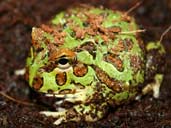 |
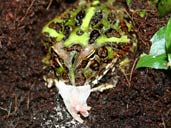 |
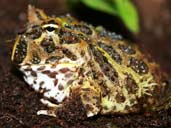 |
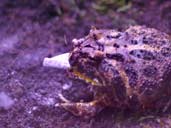 |
Horned Frog Care Sheet
Common name: Horned Frog or Pacman Frog
Scientific name: There are many different species of Horned Frog, but the two most common Horned Frogs in the pet trade are:
The Ornate Horned Frog or Bell’s Horned Frog: Ceratophrys ornata
The Cranwell’s Horned Frog or Chacoan Horned Frog: Ceratophrys cranwelli
Other Horned Frogs are less commonly kept in captivity, but here are the scientific names of the other Horned Frogs in the Ceratophyrs family:
Amazonian Horned Frog or Surinam Horned Frog: Ceratophrys cornuta
Great Brazilian Horned Frog: Ceratophrys aurita
Columbian Horned Frog: Ceratophrys calcarata
Peruvian Horned Frog: Ceratophrys stolzmanni
Joazeiro Horned Frog: Ceratophrys joazeirensis
Another Horned Frog that occasionally appears in the pet trade is the Fantasy Horned Frog, but this is not classed as a species, but is rather a man-made hybrid of the Cranwell’s Horned Frog and the Amazonian Horned Frog. Fantasy Horned Frogs are popular for their attractive colourings, but are not kept for breeding purposes as they are unable to reproduce.
Description
Description: Horned frogs are large bodied frogs that are so called because of their fleshy horn-like upper lids above their eyes. They have large mouths that seem too large for their bodies in comparison to their legs and front arms.
Ornate Horned Frogs tend to be a medium to dark green or yellow colour with red and black patches in their patterning. Cranwell’s Horned Frogs usually start out a bright green colour, but this will change as they grow into various combinations of brown, beige, green, orange and yellow.
Cranwell’s Horned Frogs can also appear in an albino form.
Size: Ornate Horned Frogs tend to grow larger than the Cranwell’s Horned Frog, with Ornates reaching up to 13-15cm (5-6 inches), while Cranwell’s average at about 10-13cm (4-5 inches). Females tend to grow larger than males in both species.
Life span: Horned Frogs can live up to 10 years with appropriate care, but average at about 6-7 years generally.
Origin: South America.
Ornate Horned frogs can be found in Northern Argentina, Brazil and Uruguay, whilst Cranwell’s Horned Frogs originate from the Chacoan regions of Brazil, Argentina, Paraguay and Bolivia.
Habitat: Horned Frogs spend a lot of time buried just below the surface of the ground. They stay there camouflaged amongst the undergrowth and wait for prey to come to them. They are not very active and can grow a cocoon of skin around themselves in cool temperatures to help keep moisture in whilst they hibernate. This is called Estivation (see topic below).
Ornate Horned Frogs are found in rainforest areas, while Cranwell’s are native to drier, sub-tropical grasslands.
Interesting Facts about the Horned Frog
Horned Frogs are sometimes called the Pac Man frog in reference to the computer game character. This is because the Horned Frog sometimes appears to be all mouth and has a very large appetite like the Pac Man character who tries to eat every ‘pac-dot’ on the board.
In South America, where the Horned Frogs originate from, they are many myths and superstitions about the Horned Frog. The locals call them ‘Ezcuerzos’, meaning simply ‘toad’ in Spanish. Some myths are positive about these frogs, stating that they are protective spirits of the water, whilst some stories claim that these frogs are so ferocious that they will kill large livestock like cattle and horses by biting onto their lips and not letting go until the poor beast has died.
Things to consider before purchasing your first Amphibian
• Who will look after your new pet if you are away?
• Can you obtain its food easily from your local pet shop?
• Would you be comfortable feeding live insects as food?
• Are you comfortable having live food in the house to feed your pet?
• Is the rest of the family happy to live with an amphibian?
Captive Care
Temperament
Horned Frogs are great first amphibians for beginners, because they are relatively easy to care for. They are also a very hardy species, so it is unlikely that your pet will become ill.
The only thing to worry about with Horned Frogs is their predatory tendencies. They will generally eat anything that moves, including other Horned Frogs, so should be kept singularly.
They can be aggressive, so be careful where you put your fingers. If they mistake your hand for food they have a very powerful jaw and grip, so it can be quite painful to experience.
If you are bitten by your Horned Frog it is unadvisable to pull your hand away from the bite as you can damage to your frog’s jaw that way. Holding the frog under running water should encourage your Horned Frog to let go and a simple antiseptic should be applied to the bitten area.
Feeding
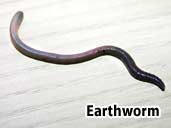 |
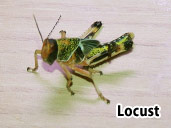 |
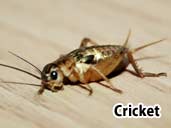 |
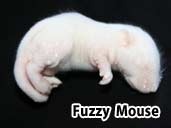 |
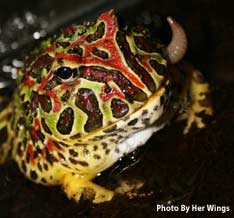 Juvenile Horned Frogs should be fed daily, with calcium and vitamin D3 supplements added to the meal 2 to 3 times a week. Juveniles will eat small earthworms, pinkie mice, crickets and waxworms.
Juvenile Horned Frogs should be fed daily, with calcium and vitamin D3 supplements added to the meal 2 to 3 times a week. Juveniles will eat small earthworms, pinkie mice, crickets and waxworms.
Adult horned frogs can handle larger prey items such as earthworms, locusts, crickets, cockroaches, mealworms, fuzzie to large mice, feeder fish, slugs and snails. Adults should be given supplements a least once a week.
Culturing your own food source is an interesting part of being an amphibian keeper. Earthworms, mealworms and crickets are all relatively easy to culture and simple to keep. Please see the 'Culturing Live Food' section on the forum for tips on how to set up your own live food source.
Housing
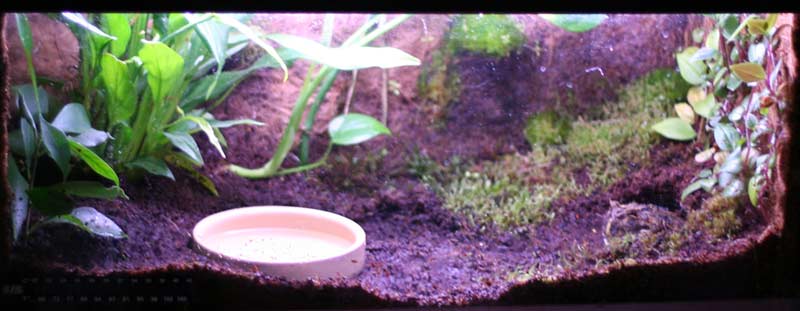
Horned Frogs are fairly inactive so do not need really large enclosures. They will grow quite big though so adequate space should be provided to meet your Horned Frogs needs.
A glass tank, plastic RUB (really useful box) or a terrarium make good homes for Horned Frogs. They prefer a woodland type set up within their housing.
Your terrarium should contain:
Substrate
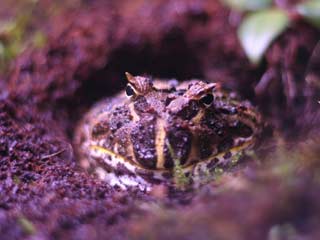 Coco husk, Eco-earth and fertilizer-free soil are good substrates to use, as Horned Frogs like to burrow and spend much of their time just beneath the surface of the substrate.
Coco husk, Eco-earth and fertilizer-free soil are good substrates to use, as Horned Frogs like to burrow and spend much of their time just beneath the surface of the substrate.
A simpler, but less attractive substrate is paper towels. These are cheap, fit for purpose and easy to clean if they become soiled.
Live moss, which is rooted into the substrate, can be used in your terrarium, but loose sphagnum moss should be avoided, so that there is no risk of ingestion during feeding.
Substrate should be checked regularly for defication as many Horned Frogs will dig down and deficate under the surface of the substrate.
Water
All amphibians need fresh water daily. A large, shallow water bowl should be provided containing de-chlorinated or bottled spring water. Tap water may be used as long as it has been treated with a de-chlorinating solution such as repti-safe or aqua-safe. These will normally have added calcium which can be benificial to your frog.
Horned Frogs are not very able swimmers, so the depth of the water should be no higher than the height of your Horned Frogs mouth when at rest.
Horned Frogs like most amphibians will soak up water through their skin and since their water bowl is used as the main place to defecate it is important that it is cleaned daily.
Humidity
All species of Horned Frog require some humidity, with Ornate Horned Frogs needing relatively higher humidity than Cranwell’s Horned Frogs that only need medium humidity.
Lightly misting the terrarium daily with de-chlorinated water in a spray bottle should suffice to keep humidity at the right level for your Horned Frog.
Ensure that between mistings the substrate remains damp, but not water logged.
A place for your Horned Frog to hide
All amphibians require somewhere to hide and may become stressed if this is not provided. Horned Frogs prefer to hide under the substrate and will bury themselves to stay hidden. Make sure the substrate is deep enough for your Horned Frog to do this.
Live plants can be used in your aquarium, but Horned Frogs are known to burrow, so expect them to be easily uprooted.
Heat
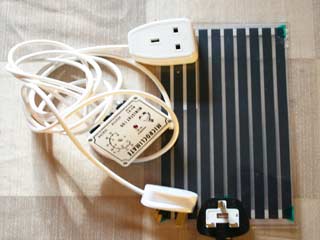 The ideal temperature for your Horned Frog is a temperature gradient of 24-28°C (75- 82°F).
The ideal temperature for your Horned Frog is a temperature gradient of 24-28°C (75- 82°F).
Heat should be provided using a under tank heat mat with an appropriate thermostat. Heat mats should only cover between a third and a half of the wall or floor space to allow your Horned Frog to thermo-regulate.
Never use heat lamps or basking lamps for amphibians, as these can cause your Horned Frog to dehydrate.
It's useful to have a small thermometer on either end of the terrarium to check the temperature. One end should be around 24°C and the other around 28°C to ensure that your Horned Frog can thermo-regulate by moving around the tank.
Lighting
Horned Frogs should be kept out of direct sunlight and a low UVB tube is generally a welcome addition to the terrarium. Not only will it allow you to view your Horned Frog better, but it will also help your Horned Frog to convert some of it’s food intake into vitamin D3. If no UVB can be provided then it is more important to ensure that your Horned Frog’s food is dusted with vitamin D3 regularly.
The exception to the UVB bulb are albino Horned Frogs. UVB should not be used in terrariums housing albino varieties. UV lighting will burn your albino Horned Frogs skin and will eventually cause blindness.
Cleaning
Your terrarium should be completely cleaned out on a weekly basis. Your Horned Frog should be moved to a temporary tank whilst being cleaned. All substrate and décor should be removed and refreshed. Use an amphibian safe disinfectant to clean the terrarium to prevent the build up of bacteria, but always ensure that all chemicals are thoroughly rinsed away, so that there is no chance that they will harm your Horned Frog.
Handling
Handling your Horned Frog should be avoided if at all possible.
Horned Frogs do not appreciate being handled and may become stressed or aggressive at the prospect.
All amphibians have delicate, absorbent skin and the oils and salts on our skin can cause them harm. If handling your Horned Frog is unavoidable, wearing latex gloves or washing your hands beforehand is advised.
Horned Frogs can give a nasty bite, so be extra careful when placing your hands and fingers near your frog’s mouth during handling.
Sloughing
Horned Frogs shed their skin at regular intervals as they grow. The old skin is pushed off with the hind legs and the skin peels off from the back end. The skin should come off in one piece and is normally eaten by the frog. The skin is pushed forwards using its legs towards the mouth.
Estivation
Estivation is the term given to the period of hibernation that wild Horned Frogs usually go into during the cooler months. They create a cocoon from old skin that helps to seal in moisture whilst the frog buries itself in the ground to wait for the summer to come.
Your Horned Frog is unlikely to go into estivation if temperatures are controlled successfully, but if you experience a drop in temperatures or humidity within your terrarium, your Horned Frog may start to estivate.
You should not feed or disturb your Horned Frog during estavation, but fresh de-chlorinated water should always be available.
Bring your Horned Frog out of Estivation by slowly raising the temperatures or creating higher humidity over a few days. This should awaken your Horned Frog and bring them back to normal activity.
Sexing
The easiest way to determine the sex of your Horned Frog is by listening. Males will call during the mating season. They will also develop nuptial pads and tend to have darker coloured throats.
Females are usually larger than males and usually have a more rounded body shape.
Breeding
To stimulate your Horned Frogs to breed they will require a cooling period of two months beforehand. Reduce the temperatures and humidity and this should encourage your Horned Frogs to go into estivation. They should not be fed during this time.
Once out of estivation you will need to simulate a rainy season, by placing your Horned Frogs in a rain chamber or simply misting the terrarium a lot more frequently. Rain should be ceased once the frogs have bred and plants should be added so your female has something to attach the eggs to.
Horned Frogs can spawn between 1,000 and 2,000 eggs, which should be separated from the adults to avoid your frogs eating them. Eggs should hatch within 2 to 4 days.
Tadpoles are cannibalistic, so it is advisable to separate them if possible. If not, give the tadpoles plenty of room and hiding places to lower the rate of cannibalism. Feed them on black worms, tubifex or finely chopped earthworms daily.
Metamorphosis occurs within 3 to 5 weeks and froglets can begin eating a diet suitable for Juvenile Horned Frogs as soon as the tail is absorbed.
Recommended reading
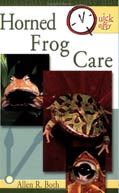 Horned Frog Care - Quick and Easy Guide by Allen R. Both
Horned Frog Care - Quick and Easy Guide by Allen R. Both
Quick and Easy instructions on Horned Frog Care. Covering housing, feeding, breeding and related species.
Click to find it on Amazon.co.uk
Other questions about the Horned Frog
If you have any other questions why not join The Amphibian Forum and ask one of the many experienced keepers. The reason this website was set up was so people in the amphibian keeping hobby could share their experiences with others.

